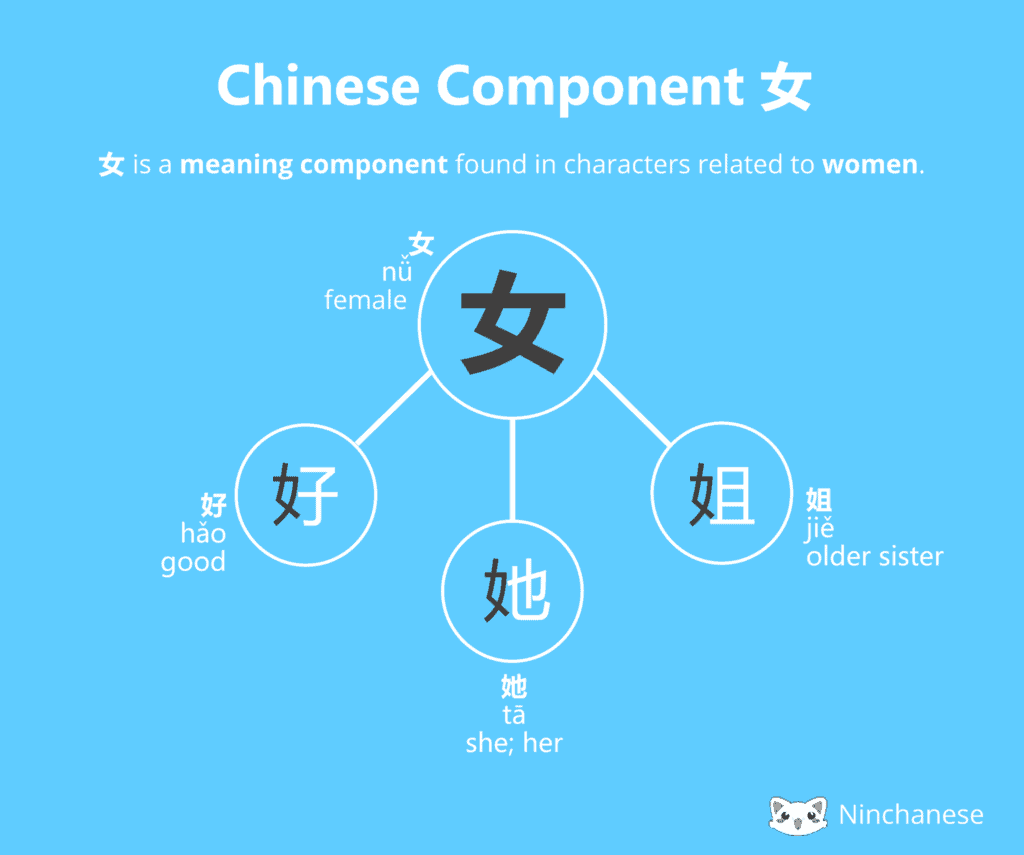The Chinese Character 女
And its component form
女
nǚ
- female
- woman
- daughter
The character 女, which means woman, was created to look like the image of a woman crossing her legs. Can you see it?
In ancient China, women were always depicted that way on Oracle bones, as they were supposed to stay at home to do housework, while waiting for their husband to come back from the farm work.
女 is both a character and a character component

女 can be used as a meaning component in a Chinese character. You’ll find 女 in characters related to women. It can also be found in characters to express gender, femininity, motherhood and by extension, beautiful things.
These characters all contain 女:
When used as a component, 女 can also be found in other words.
The component 女 can also be found in words that don’t seem to be related to women at first. But once you go deeper, and look at the character’s history and etymology, you’ll more easily understand why it contains the character 女.
For instance, as women were not always well respected in the ancient society, the character component 女 can sometimes be found in “bad” characters such as jealousy 嫉妒 or adultery 奸.
女
You can find it in words like:
好 hǎo: good (a 女 woman with a 子 child is a good thing)
婚 hūn: to marry; wedding; to take a wife (the 日 day a 女 woman joins a 氏 clan)
安 ān: quiet; still; calm; secure (a 女 woman under a 宀 roof equals peace – that’s how it was in ancient China)
奴 nú: slave (A女 woman held by a又 hand equals a slave…)
You’ll also find the meaning component 女 in many other Chinese characters. Browse the full list here.
All 80,000+ Chinese characters share the same character components. Character components are therefore essential for Chinese learners: they are the building blocks of Chinese. Character components help tremendously with understanding a character: they provide information on its meaning or on its pronunciation. In short, knowing character components will help you analyse, learn and remember each Chinese character much better.
Join us on Ninchanese as we teach you everything about the Chinese character components you need to know, little by little.
